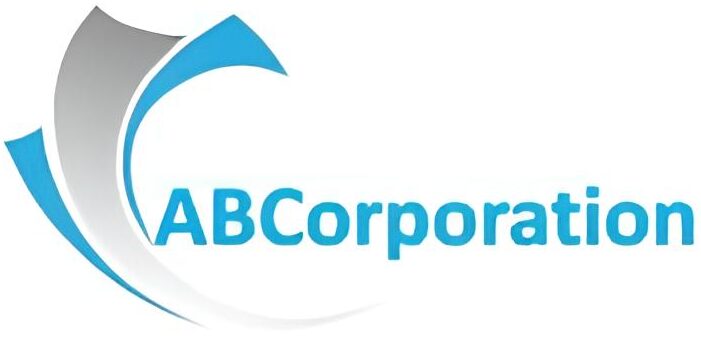Effective Reporting in Horizon Europe
Your first periodic report (RP1 report) for the European Commission (EC) may be due soon now that your Horizon Europe project is operational. These reports are required by law to be sent to the EC.

They make it possible for the EC Project Advisors and Financial Officers assigned to your project to: (1) confirm your work progress in relation to the project description found in Annex 1 of the Grant Agreement (GA), also known as the “Description of the Action”; and (2) determine whether the costs that the project partners have claimed are eligible. Although this can seem daunting, you shouldn’t be concerned!
How frequently should one report?
The length of your project will define how many reporting periods you need to submit, which was decided upon during the grant preparation stage. There are usually two reporting periods for projects that last 24 to 36 months, three for projects that last 42 to 48 months, and four for projects that last 60 months.

When reporting goes from continuous to periodic, what are the benefits?
To make it easier to monitor your project and ensure that it is carried out in accordance with EC regulations, the Continuous Reporting module of the EU Funding & Tenders Portal was opened at the beginning of the project. This module becomes a component of your report (component A) after Periodic Reporting is turned on at the conclusion of a reporting period. To be ready for the periodic report(s), we advise filling out at least part of the forms in the Continuous Reporting module as you proceed.
Periodic reports from Horizon Europe and H2020: are they identical?
The reporting procedure has remained essentially the same, based on our observations from the first two recently submitted RP1 reports. For instance, the RP1 report for the majority of projects is due in 12 or 18 months, and your consortium has 60 days from the conclusion of each period to submit the corresponding periodic report. And there are still only two components to the reports:
- Part A: Project-specific web forms available through the EU Funding & Tenders Portal. This section is based on data entered into the financial statements—which are cost claims that each project partner must submit through the portal—in the Continuous Reporting and Periodic Reporting modules. (Note that while doctoral networks and lump sum projects are exempt from this since they are subject to different regulations, this applies to research and innovation actions, innovation actions, and coordination and support actions.)
- Part B: The Technical Report, which needs to be posted into the portal as a PDF file and describes the work done during the reporting period.
However, Part A, the online forms on the site, has significant modifications and new criteria (from 13 forms in H2020 to 17 forms in Horizon Europe). These call for partners to log in and enter data in addition to requiring extra information. Considering the amount of information needed, it is best to begin filling these out as soon as a reporting period ends, if not before. The information that needs to be entered into each of these online forms and submitted to the EC is outlined below.
Part A: facts and figures
The Periodic Reporting module only shows up on the EU portal following the conclusion of the reporting period, whereas the Continuous Reporting module is available for use for the whole life of a project (and beyond). The primary practical distinction between the two modules is that financial statements and the technical report can only be contributed to the Periodic Reporting module. All other information included in the Continuous Reporting module moves automatically to the Periodic Reporting module. The coordinator can use the latter to submit the periodic report after they have all the necessary data. You just need to click on the corresponding piece in the interactive infographic below to complete Part A.
Scroll the slides below to see more instructions:






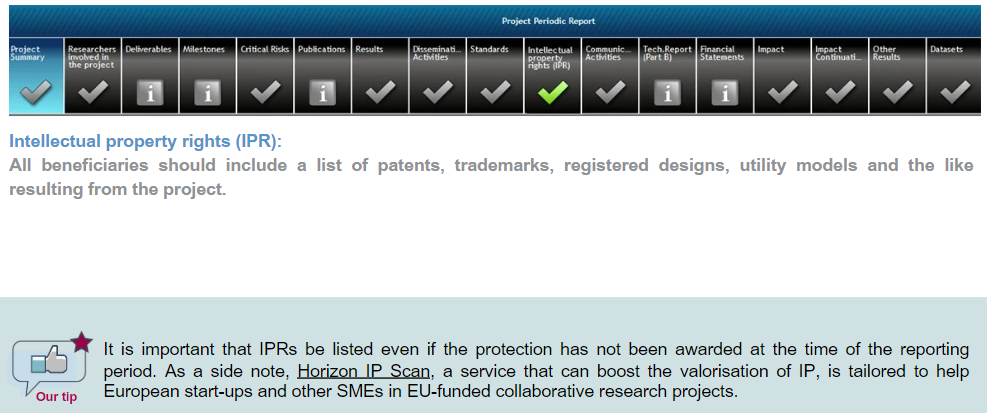
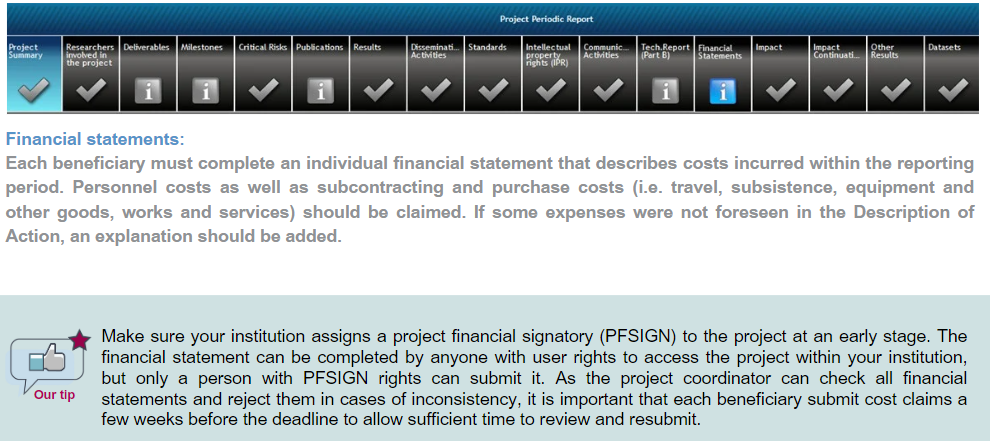
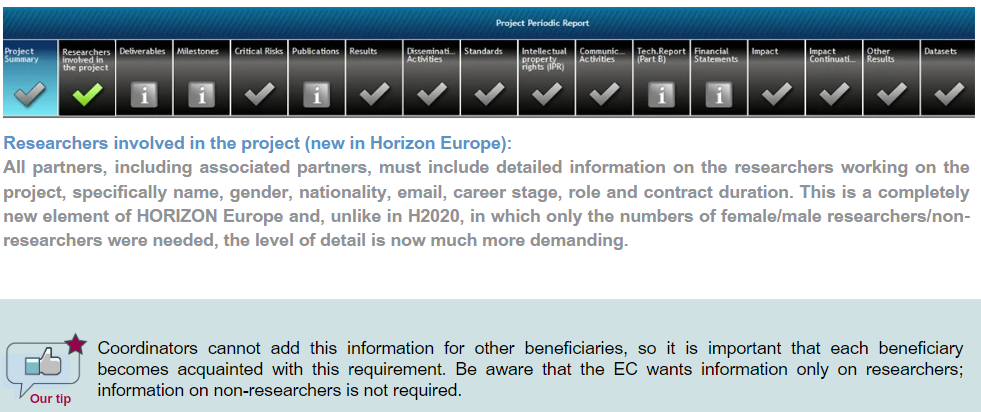
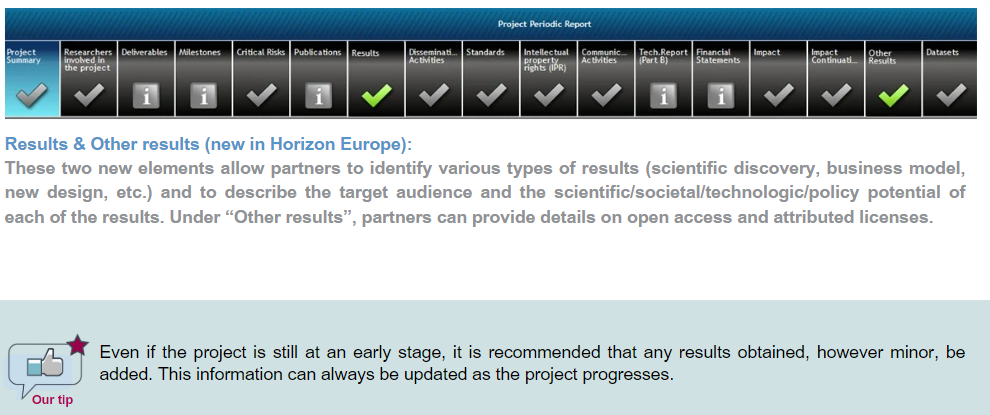
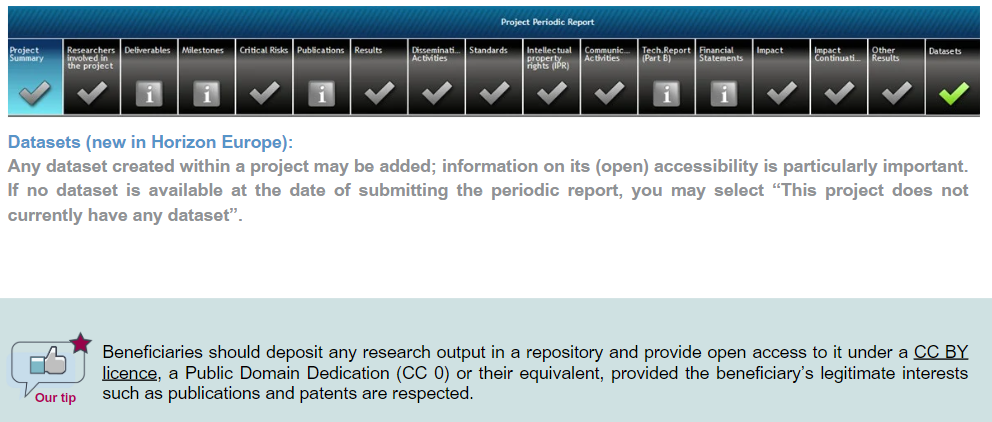
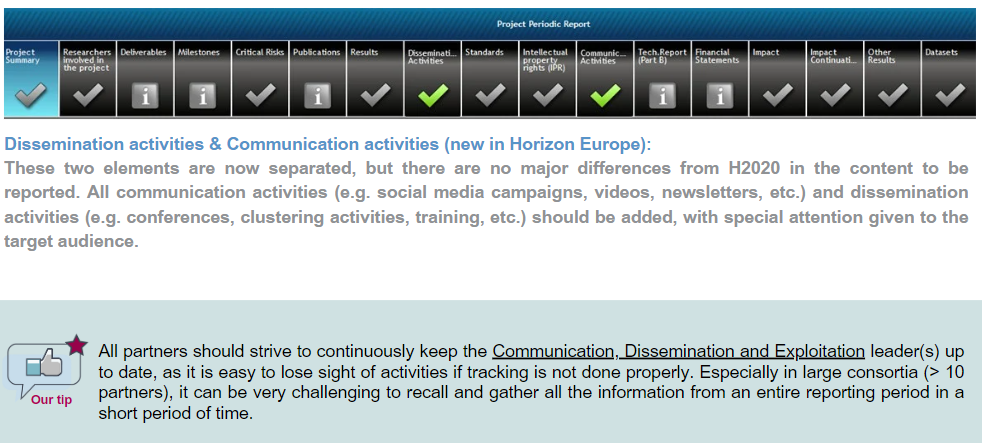
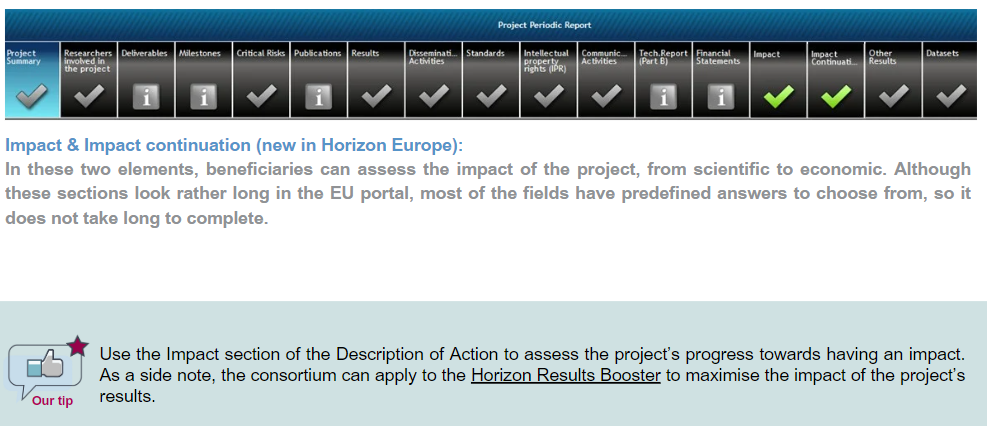
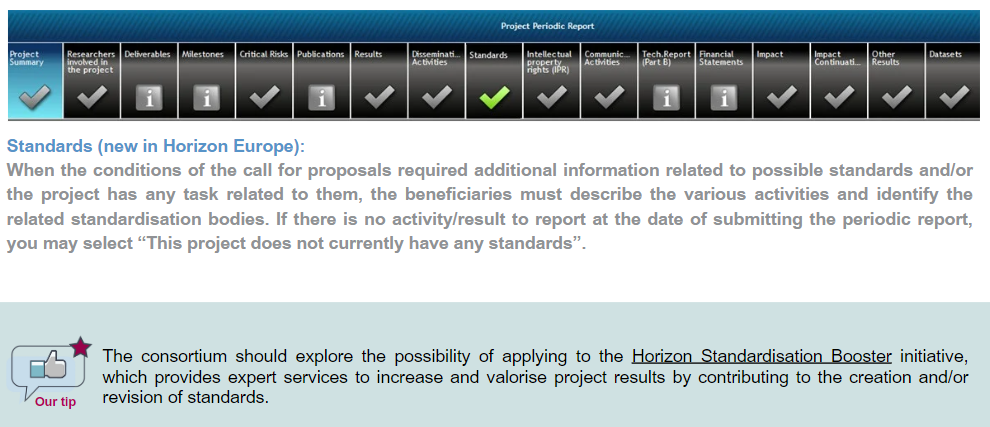
Part B: description of the work progress
The narrative account of the work completed during the reporting period is found in Part B. You can get the template for a technical report from the Periodic Reporting section. It is possible to re-upload it as a PDF after compilation. A summary of the tasks completed for each work package during the reporting period should make up the main body. Although there should be a lot of detail, the report nevertheless needs to be legible and succinct.
While it is not necessary to repeat information that is already in Part A, it is advisable to make references to certain parts of Part A. A special focus should be placed on any deviations from the Description of Action in the EC Grant Agreement, together with any potential repercussions and any corrective actions. Delays and important goals, deliverables, or milestones that haven’t been reached entirely should also be explained.
Regarding open access and the plan for results exploitation and dissemination, the consortium can still give an update in Horizon Europe (these are two optional chapters in the part B template). A rationale must be included in the “Use of resources” chapter for any budgetary deviations, transfers of cost categories, and revisions to earlier financial statements.
Tips from AB Corporation
Since all project partners' contributions are usually compiled in the technical report, the template should be created and distributed as soon as possible to allow all work package leaders to contribute. The input can be gathered prior to the Periodic Reporting module opening, as you are aware of the scheduling of the periodic reports. Our experience indicates that between the project coordinator and the working teams, iterations are frequently required. Supplementary information in the form of images and annexes is more than welcome. To guarantee a high caliber of given content, an internal review procedure and multiple quality checks are advised.
Review meetings of the European Commission
The Project Adviser may invite the consortium to a review meeting with two to four external experts to assess the status of your project. The work package leaders report the scientific and technical advancements within their respective work packages during this meeting, while the coordinator usually summarizes the overall project accomplishments and status. Before the meeting, the experts should study the provided deliverables and the drafted periodic report. Then, they should ask questions and offer immediate input.
The approval of the periodic report is a requirement for receiving funds, thus the coordinator may still receive a “suspension of the payment” letter in spite of the review meeting. You need not be alarmed, though, as this simply indicates that more information is required. After this data is accepted, the following payment will be made.
Tips from AB Corporation
It is advisable to schedule this meeting for sometime between the conclusion of a reporting period and the periodic report submission date. The technical report does not have to be submitted in its complete form—an advanced version will do—and your consortium is free to revise it following the review meeting in order to incorporate the evaluators' views before the deadline. This can expedite the periodic report's vetting process and give the consortium important information prior to the final submission. Further information may yet be requested by the EC, particularly on the financial statements.
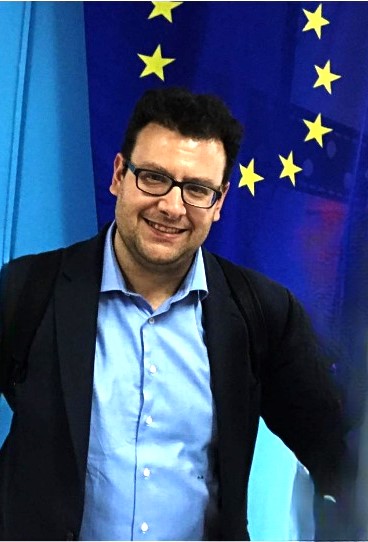
AB Corporation can support you
Numerous project consortia have benefited from the effective support of our team at AB Corporation in producing their periodic reports. As an advocate for numerous EU-funded initiatives, we offer direction and assistance with planning, monitoring, and evaluation. Please get in touch with one of our experts if you would like more information about our project management assistance.
